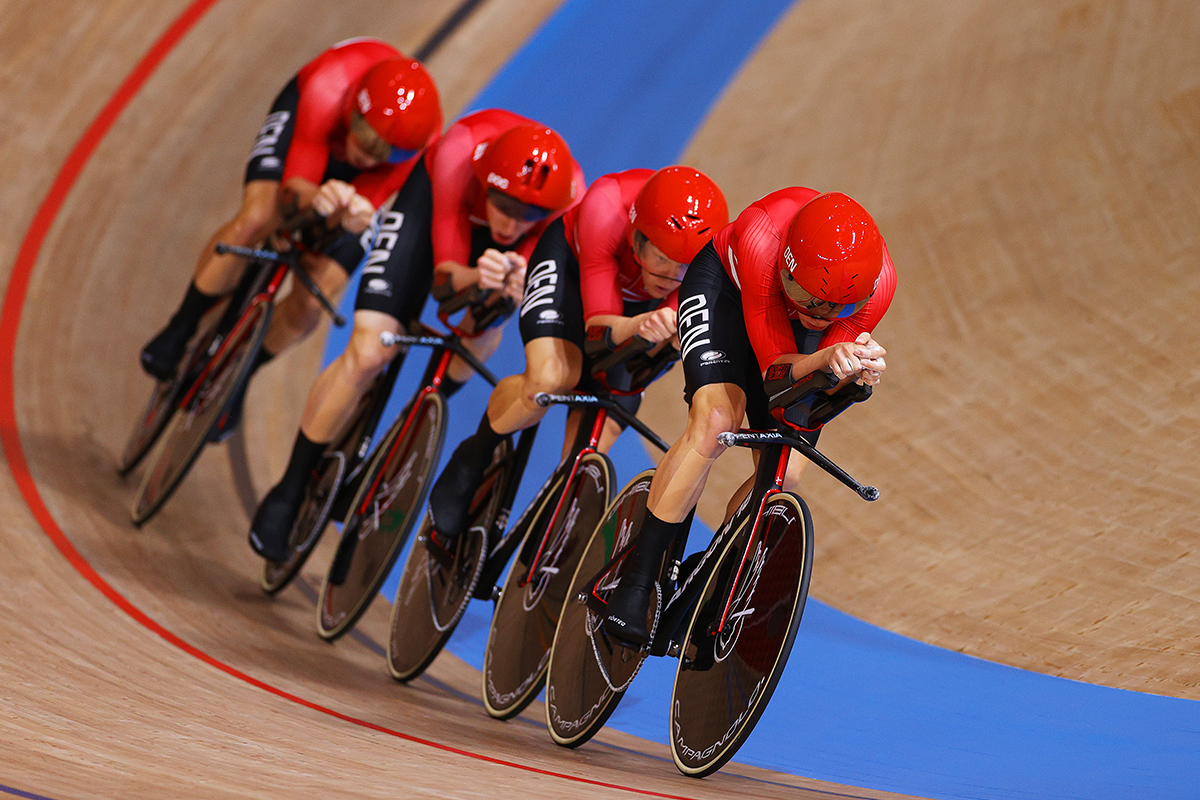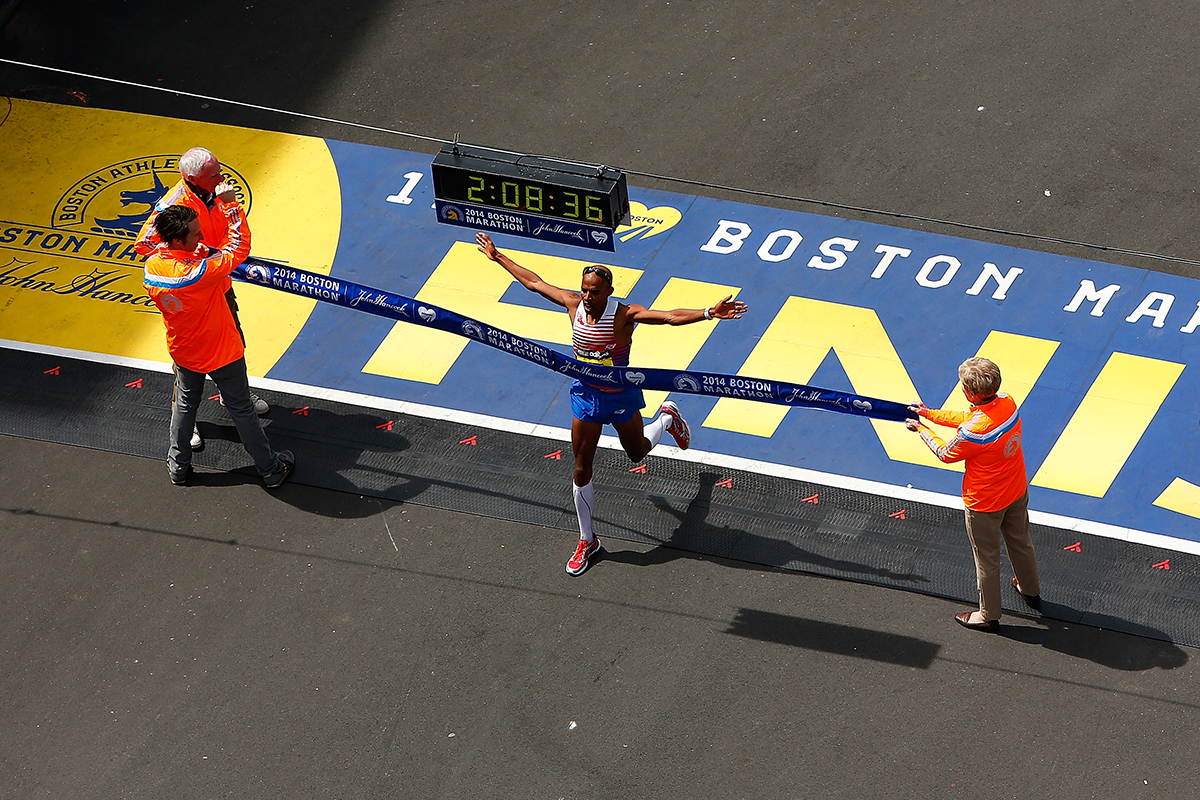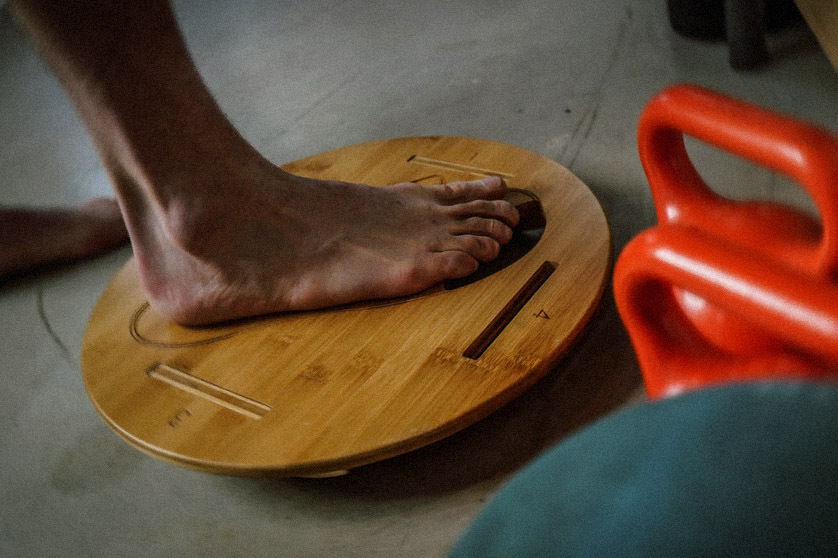A few days ago, during the men’s team pursuit qualifying round at the Tokyo Olympics, British cycling legend Chris Boardman called attention to some mysterious strips of “medical tape” situated on the legs of the four Danish riders. They were placed on the same spot for each rider on either leg right where, Boardman tweeted, “it would be aerodynamically advantageous.”
In the comments, one user wrote: “Tape there definitely not associated with an injury I’ve ever heard of in any case. It’s too low to influence the knee and too medial to assist the tibialis anterior so I’m calling BS.” Meanwhile, Cyclingnews.com mused that the tape would act as trip strips, “creating turbulence to the onrushing air, helping it to remain attached to the surface of the leg for longer and subsequently improving the aerodynamic performance of the riders.”
In simpler terms, the Danish team — which raced to an Olympic record — cheated. Kind of. After the performance, the UCI (Union Cycliste Internationale) initially remained silent, suggesting the tape wasn’t an issue. But later on in the week, the UCI issued an official warning to the Danes, and banned the tape for future races. The Danish team ended up earning the silver medal after losing in an upset to the Italians. (Make of it what you will, but the Danes were tape-less in that final race.)
So, why should you care about any of this? Because in your athletic endeavors, there generally isn’t a governing body scrutinizing your body for suspicious performance-enhancers. The casual runner or cyclist can absolutely show up on race day with medical tape — better known as kinesiology tape, or KT — and reap some benefits.
KT is an extremely stretchy mix of nylon and cotton that imitates the skin’s elasticity to allow for full range of movement. You can apply it to a specific muscle to increase blood flow (some runners recommend taping glutes to “wake up” the muscle), over the knees to create space in the joints (which limits irritation in the region), or along trigger points in the back and shoulders to decompress tissue, mitigate swelling and improve posture.
Watch enough of the Olympics and you’ll see kinesio tape used in all sorts of “legal” ways, by basketball players, beach volleyball teams, what have you. The Danes just cycled a little too close to the sun in orienting the strips over what was essentially an all-bone part of their legs. It’s highly unlikely you’re going to be running (or cycling) quickly enough to see tangible aerodynamic benefits from KT — keep in mind, track cyclists travel at speeds of over 50 mph — but you should absolutely pick up some medical tape for all its other use cases.
Head here for detailed descriptions of how to tape patterns that will combat common runner’s issues like plantar fasciitis, runner’s knee, shin splints and hamstring strains. The only times you should stay away from kinesiology tape? If you have open wounds, allergies around adhesives, deep vein thrombosis, or extraneous circumstances, like a cancerous growth or an area where a lymph node was removed. Otherwise, tape away, and get out there.
The Charge will help you move better, think clearer and stay in the game longer. Subscribe to our wellness newsletter today.


















